京漆器 京都漆器工芸協同組合
KYO-URUSHILACQUERWARERADENLACQUERWARE WITH SEASHELLS
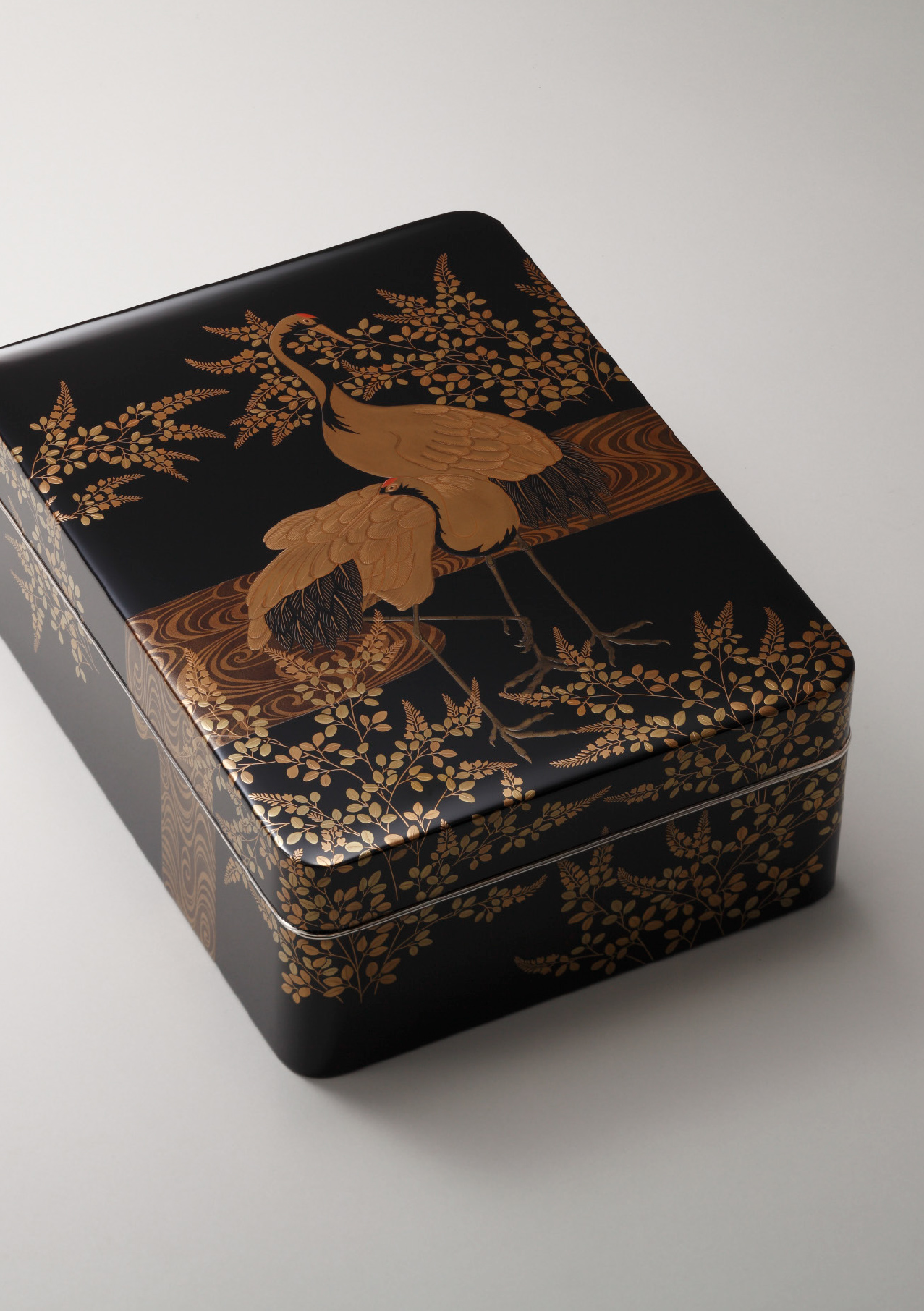 1
1
- 蒔絵硯箱「鶴に萩 銀縁合口手箱」。
漆器は、日本、中国、タイ、ベトナムなど、漆の産出国で発達したアジア独特の工芸です。なかでも日本の製品が早くから世界の注目を集めたことから、「ジャパン」が漆器の総称となりました。蒔絵など日本独自の技術は平安建都(794年)以降に京都で発展しました。室町時代(14世紀)からは茶の湯文化と深く結びつき、棗、炉縁、茶棚、干菓子盆、香合などが漆器で製作され、華麗さと同時にわび、さびといった内面的な味わい深さが加わり、京漆器の大きな特徴のひとつとなりました。製作は木地師、塗師、蒔絵師といった専門の職人による分業でなされ、それぞれに高度な技術が継承されています。現在では、たとえば1661年創業の「象彦」においては、食器や調度品のみならず、漆の素材感を活かしたモダンなデザインのアートパネルやフラワーベースなども生み出されているほか、海外ブランドとのコラボレーションにより、腕時計の文字盤、万年筆、シガーケース、パンプスのビジューなども製作されています。
Lacquerware is a craft unique to Asia developed in Japan, China, Thailand and Vietnam. Among these countries, "Japanese lacquerware" has become the generic term, as lacquer from Japan has been renowned worldwide for centuries. The technology was originally imported from China in the Nara period (8th century) and further developed when Kyoto became the capital in 794 (beginning of the Heian era). Since the Muromachi period (14th century), Kyoto lacquerware has been deeply associated with tea ceremony culture: tea caddies, fireplace borders, tea racks, sweet trays and incense boxes were all made of lacquer. The profoundly spiritual wabi-sabi aesthetic became a major feature of Kyoto lacquerware, bringing it to a high artistic level. The manufacturing is carried out by specialized craftsmen such as wood masters, painters, and maki-e masters, each of them having learned the technique from the earlier generations. Today, for instance, "Zohiko" manufacturer has been producing lacquerware since 1661, not only tableware and furniture, but also modern design art panels and flower vases. In collaboration with overseas brands, they also produce wristwatch dials, fountain pens, cigars cases and stylish high-heeled shoes.
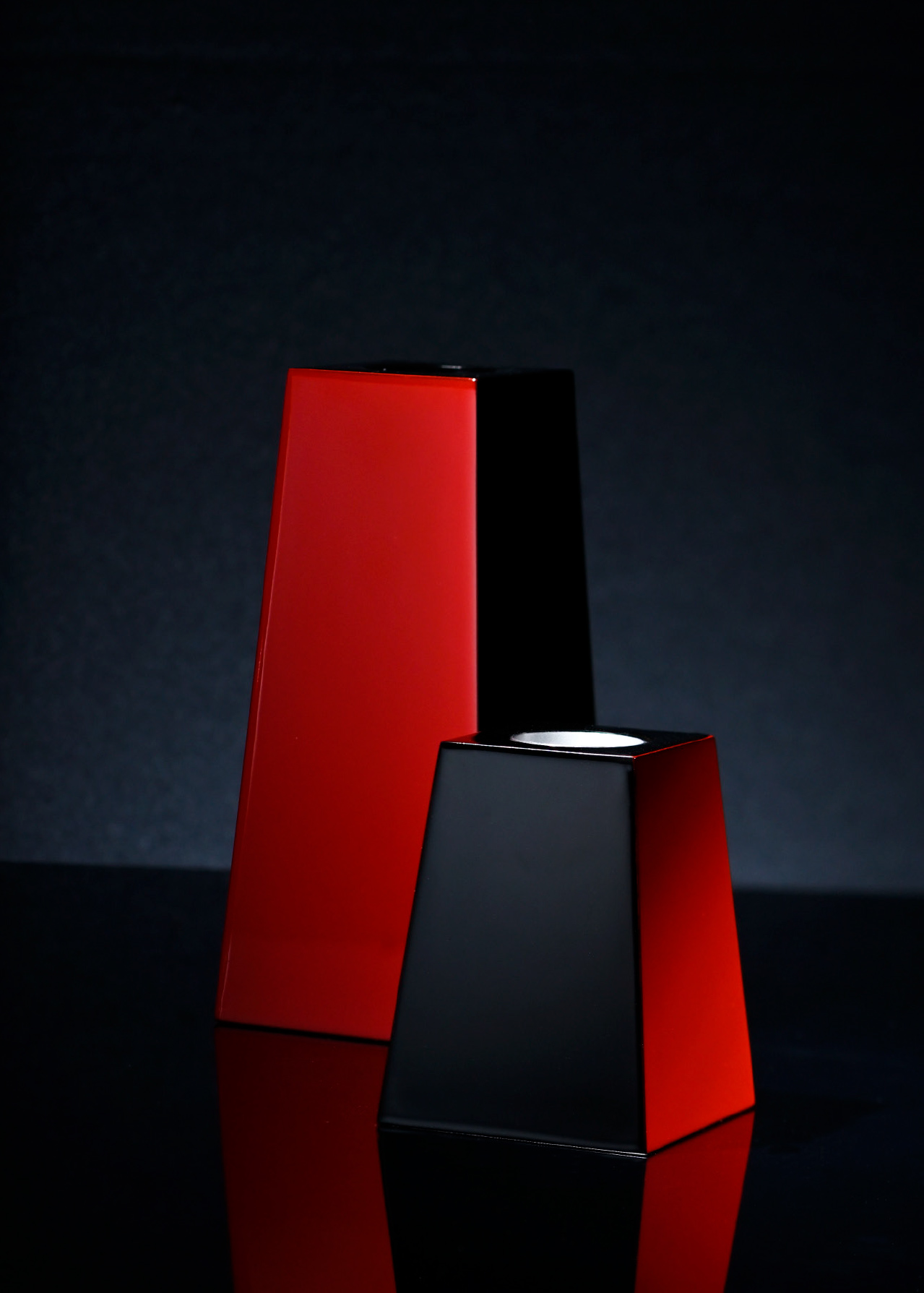 2
2
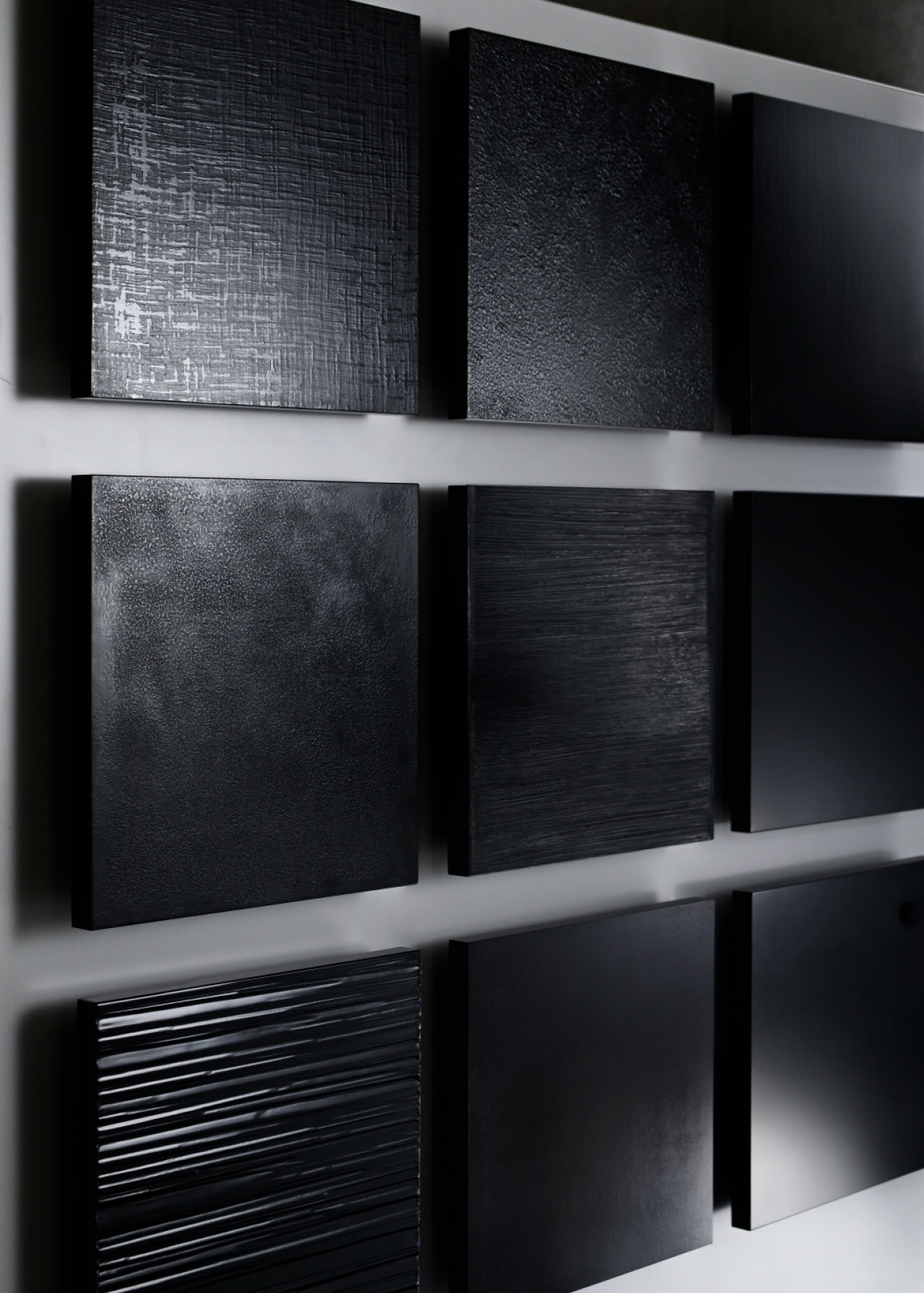 3
3
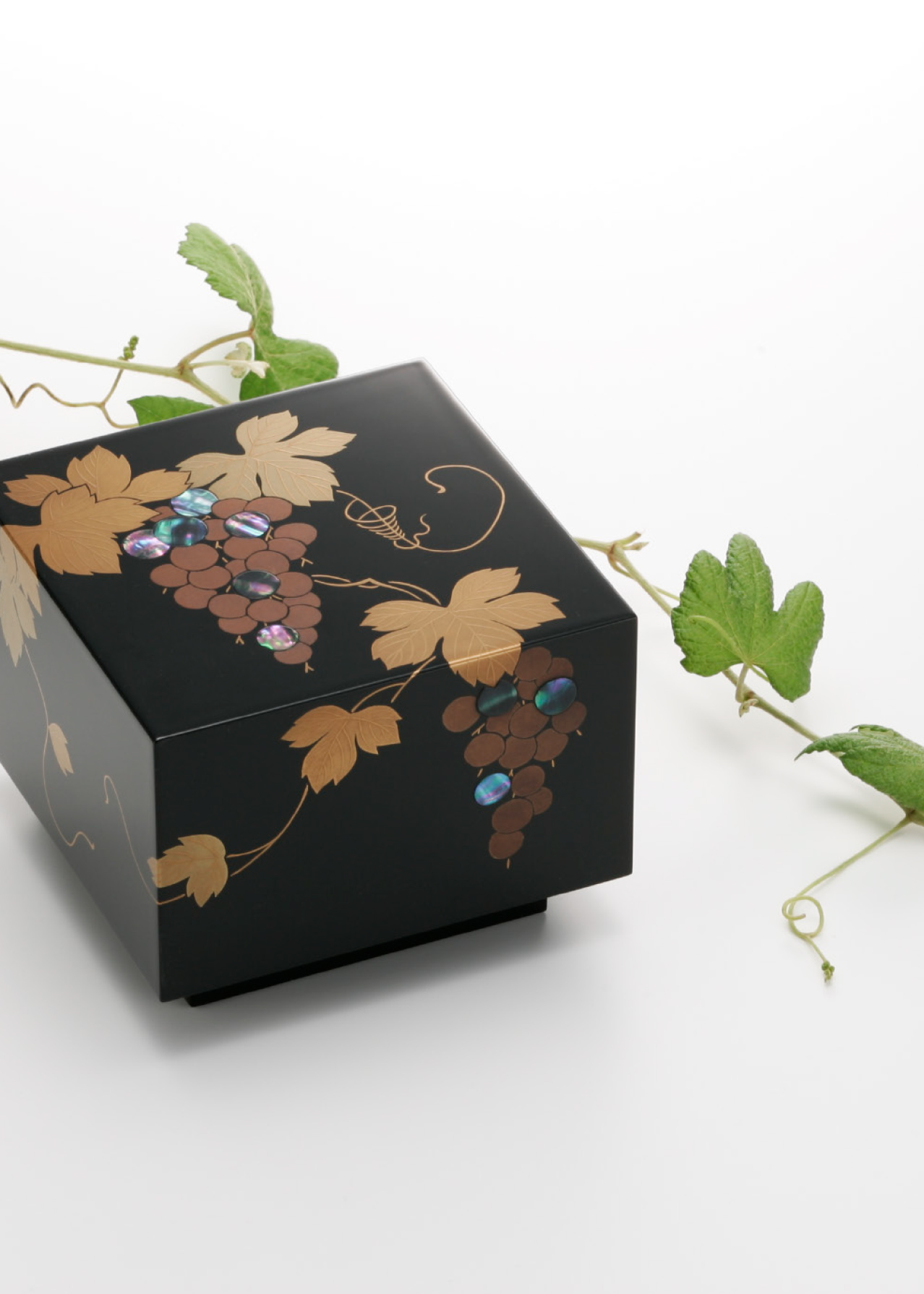 4
4
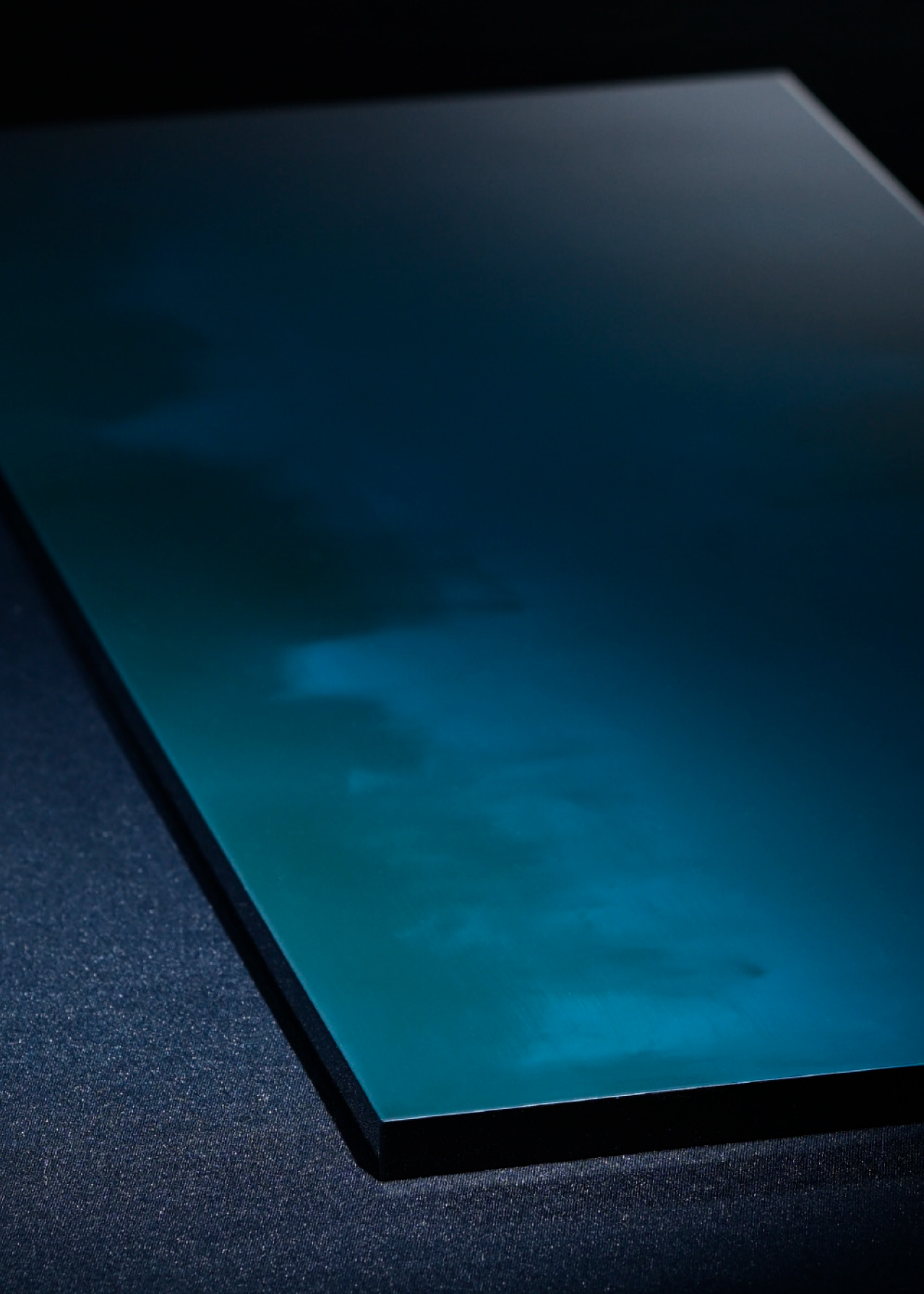 5
5
- : 黒朱塗り分け花入。
- : 布目、つや消し、呂色塗、一閑張、刷毛目、へぎ目など、技法によって風合いが異なる漆の特徴を表現したアートパネル「変り塗」。
- : ぶどう被蓋宝石箱。
- : 吸い込まれるような深いブルーのグラデーションの美しさを最大限に表現したアートパネル「最深色」。
(1,2,3,4,5 すべて株式会社象彦)
1: Maki-e ink box Tsuru ni Hagi – Ginbuchi Aikuchi Tebako. 2: Vase painted separately with black and vermilion. 3: Kawari-nuri, an art panel where the appearance differs according to lacquer technique used, such as cloth, matte, luster polish, one-sided upholstery, brush and hem. 4: Grape-covered jewel box. 5: Saishin-shoku, an artwork that celebrates the subtle gradations of a beautiful deep blue color. (1,2,3,4,5 Zohiko)
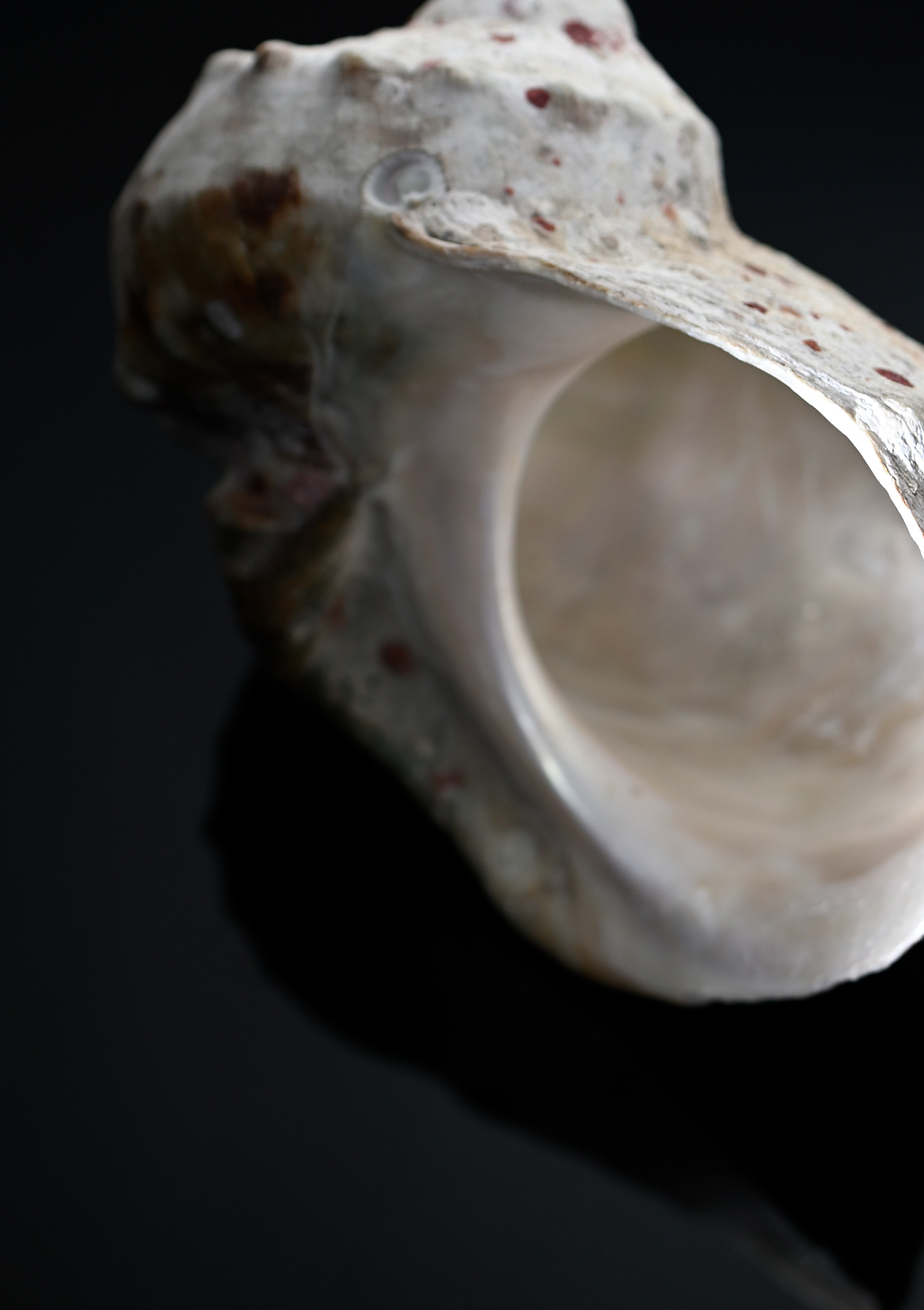 6
6
- 夜光貝。内側の真珠層を薄く削り取る。
日本における漆の起源は、約1万年以上前の縄文時代早期まで遡ります。奈良時代(8世紀)には、唐の影響のもと、漆で文様を描き、金粉・銀粉などを蒔いて定着させる蒔絵や、貝殻の内側の虹色に輝く真珠層を薄く削り取り、素地に嵌め込む螺鈿などの技法が発展しました。室町時代(14世紀)以降、京都を中心とした茶の湯文化の興隆とともに、贅と技を極めた茶道具や調度品、家具、食器などが作られますが、それらに「わび」「さび」といった内面的な味わいが含まれていることが、京漆器の大きな特徴といえるでしょう。職人は、何度も漆を塗り重ねることでやわらかな質感と堅牢さ、艶を生み出し、0.1ミリ以下の微細な調節により、まるで宇宙のように目を惹く金銀や貝殻の輝きを加えます。この伝統技術は、木材だけでなく金属プレートや和紙への加工も可能で、アクセサリーなどの装身具、アートパネルなどの装飾品へと用途を広げています。
The origin of lacquerware in Japan dates back more than 10,000 years to the early Jōmon period. During the 8th century Nara era, new techniques flourished under the influence of China’s Tang dynasty. For example, maki-e (literally: sprinkled picture) is lacquer sprinkled with decorative patterns using gold or silver powder. Raden technique uses a thin, rainbow-colored layer of mother-of-pearl cut from the shell and inlaid into the lacquer. Starting in the Muromachi era (14th century), the tea ceremony became central in Kyoto’s cultural life, resulting in exquisite lacquered tea utensils, furniture and tableware. The characteristic feature of Kyo lacquerware is the fact that it exemplifies the traditional aesthetic of wabi-sabi. Craftsmen repeatedly apply lacquer over and over to create a lustrous, soft but robust texture. Making fine adjustments of 0.1 mm or less, they then add the eye-catching brilliance of gold, silver or mother-of-pearl designs. These traditional techniques can be applied not only to wood, but also to metal plates or Japanese paper. Today’s traditional craftsmen are currently expanding its application to new media, such as decorating accessories or art panels.
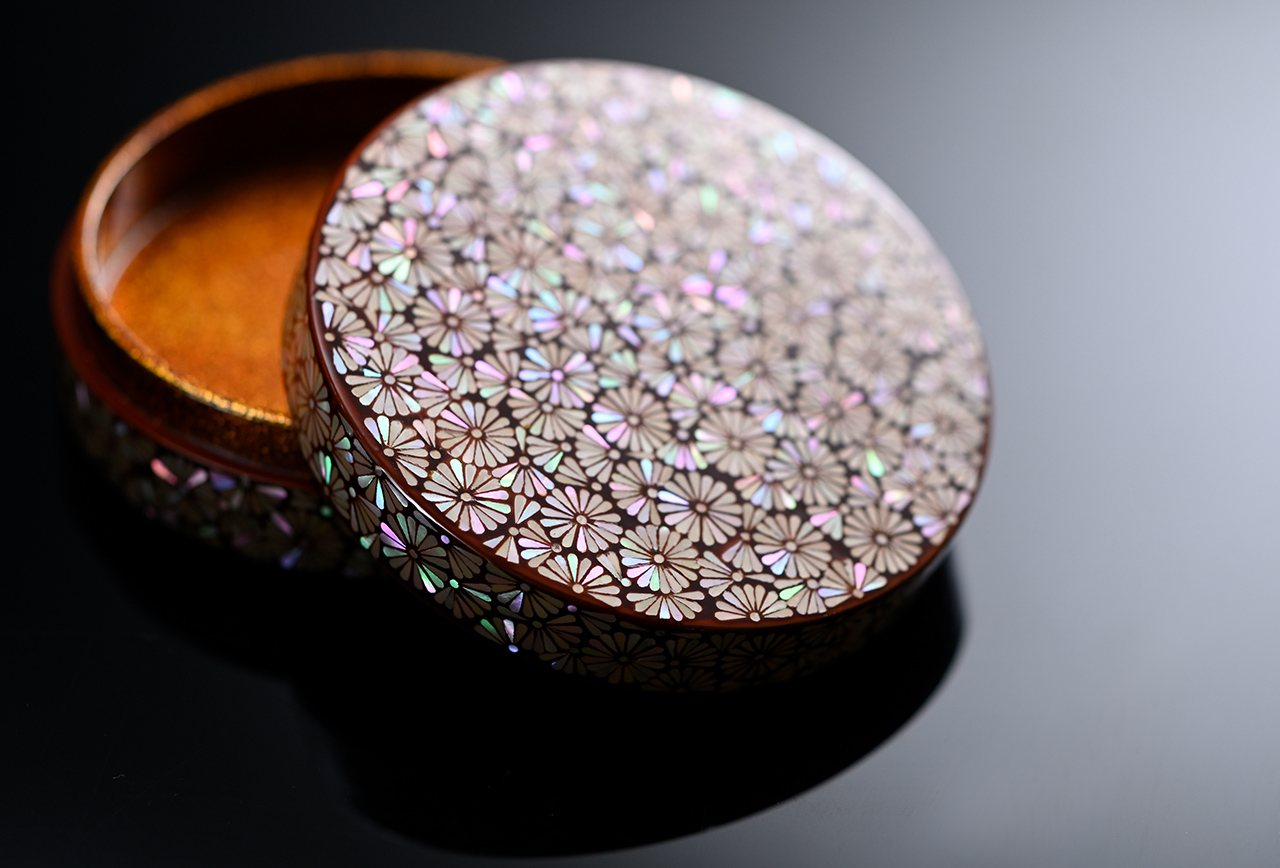 7
7
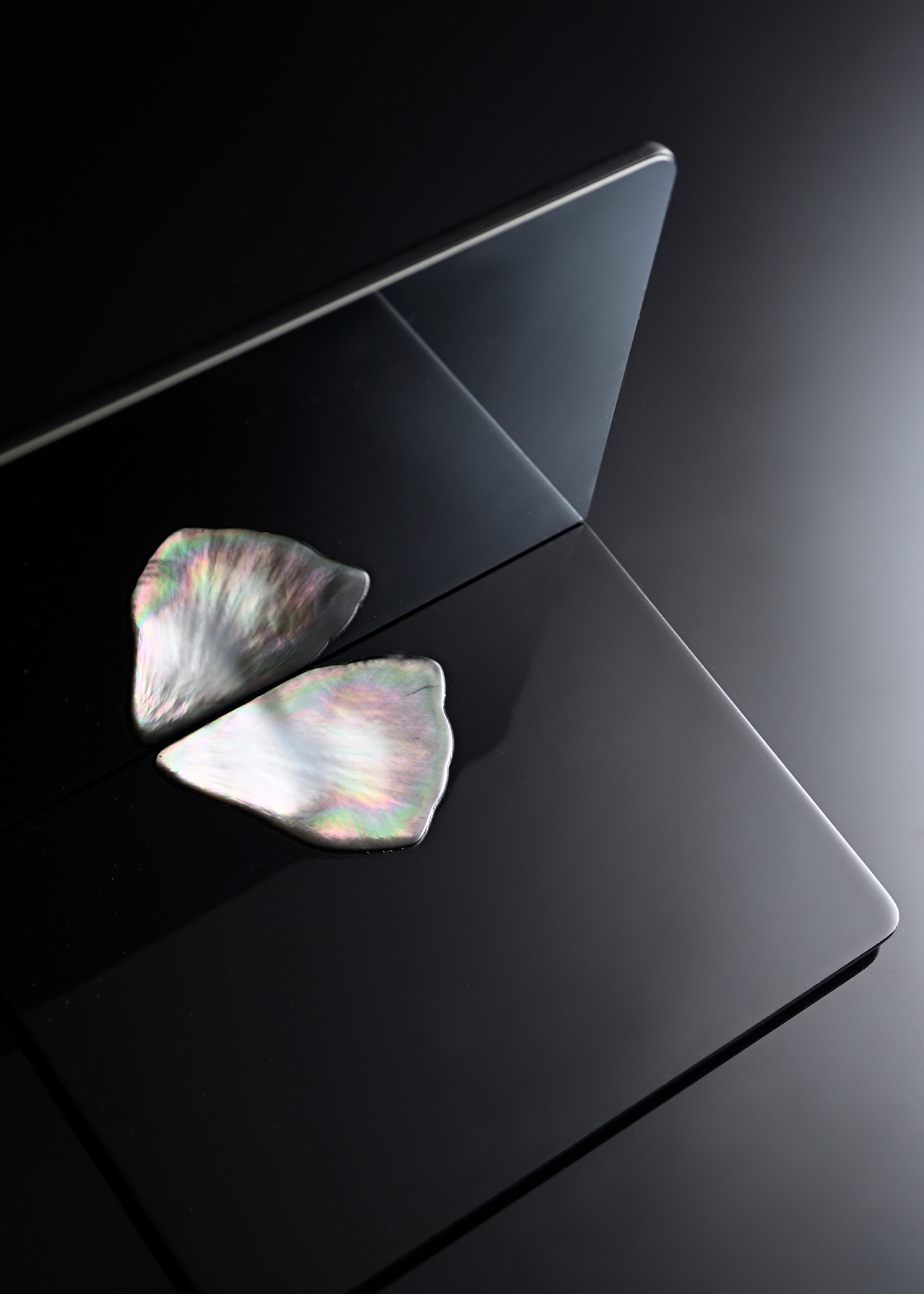 8
8
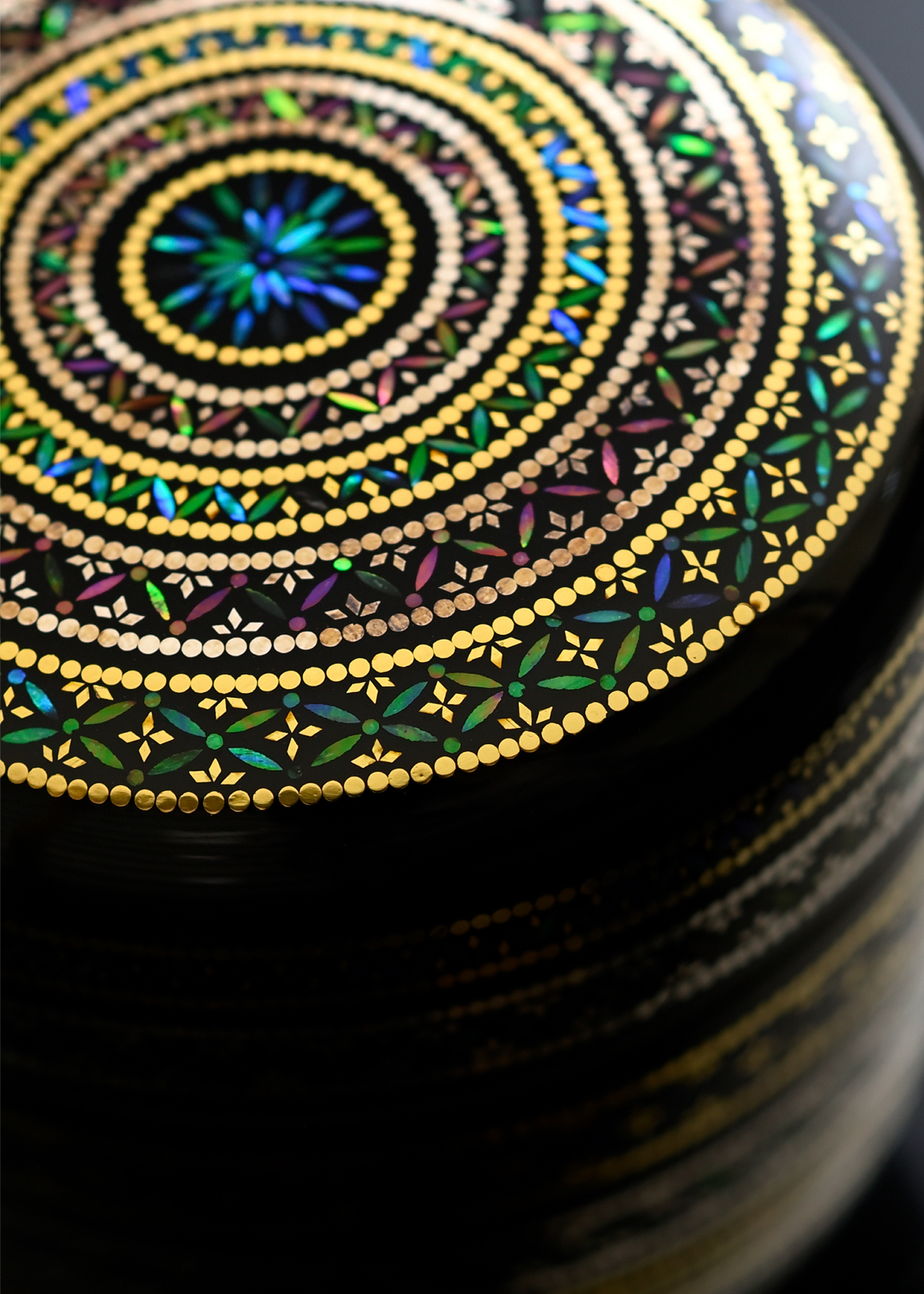 9
9
- : 「香合 押合菊」。
- : フランス人デザイナー、ピエール・シャリエとのコラボレーションによって生まれたスタンドミラー。貝の姿がシンメトリーとなり、美しさが増幅する。
- : 「棗 独楽文様」。7,9ともに、貝殻の自然な色合いのみで構成されている。貝殻は光の入る角度によって輝き方が変わるため、輝きや色合いを揃えるのに高い技術が要求される。
(6,7,8,9 すべて嵯峩螺鈿野村)
6: The inner layer of the shell is shaved off. 7: A Kogo Oshiai-giku incense box. 9: A Natsume Koma Monyo tea caddy. Both are made entirely from the natural color of the shell. Since the shell shines differently depending on the angle of the light, high skill is required to match the shine and color. 8: Stand mirror created in collaboration with French designer Pierre Charlier. The appearance of the seashell becomes symmetrical, and the beauty is amplified. (6,7,8,9 Saga Raden Nomura)

